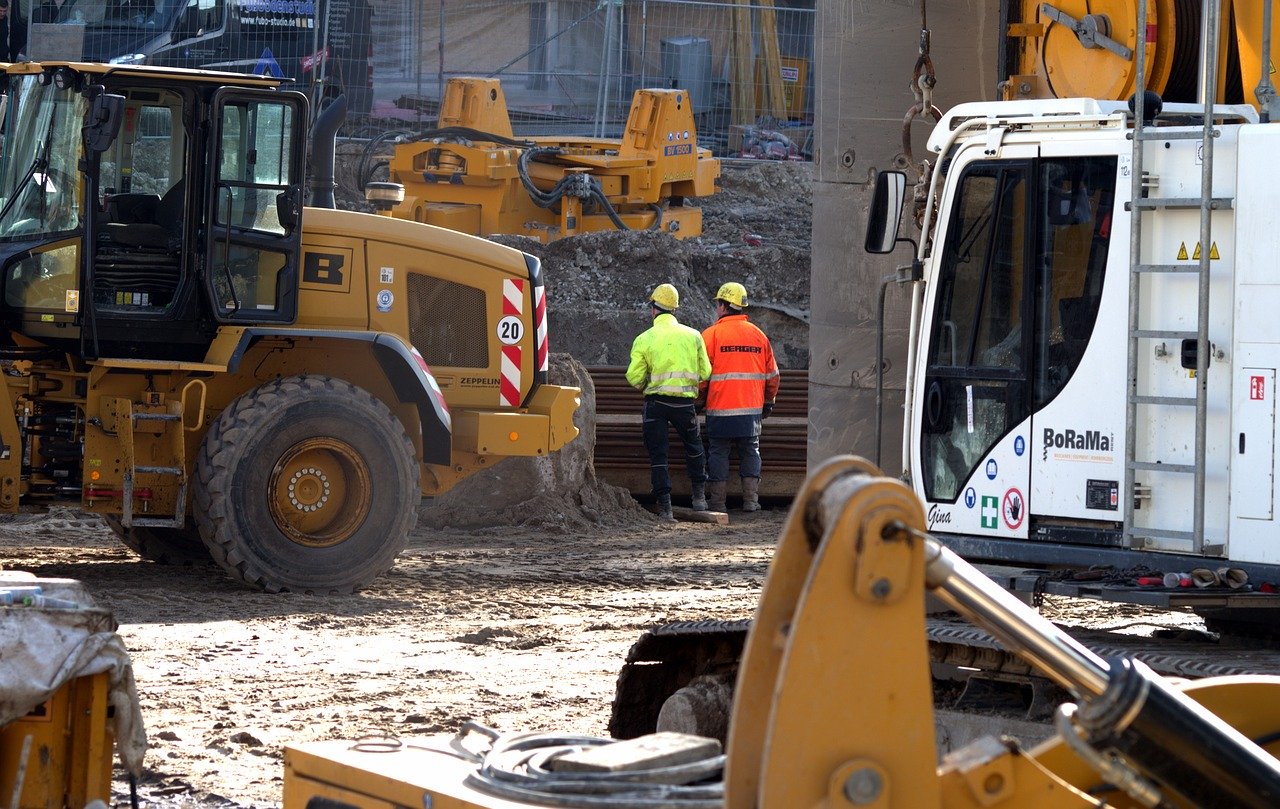Many project managers who work on projects with a lot of repetition tell us that they have to spend up to 50% of their time each week on admin-heavy tasks related to planning. Their programme is stuck on MS Project and to update it they have to go through countless WhatsApp notifications, emails, or phone calls. It doesn’t take much before they get buried under a mountain of work that doesn’t truly add value to their projects.
Free ebook: Why WhatsApp and Excel aren’t enough for running complex construction projects
What does adding value truly mean, though? As described also in the Last Planner System (LPS) method, an activity is considered to add value to a project only when it fulfills three distinct criteria:
- the customer agrees to pay for this activity.
- the activity is executed correctly from the first time.
- the activity has a direct, positive impact on the fit, function, or form of the final product.
The problem is that in many cases, project managers and their teams tend to overlook these criteria, opening the door to waste. In a construction project, waste can be shortly defined as an activity that doesn’t comply with the three principles mentioned above. That could be:
- unnecessary transportation of vehicles and materials from one place to another.
- materials getting damaged in the inventory because they were ordered too early or stored poorly.
- downtime between tasks on site.
- unnecessary motion (that could even be spending too much time walking up and down from the site to other facilities like the cantine for instance).
- doing more work than the amount required from the customer.
- carrying out more tasks and activities before is required.
- rework and added cost due to defects.
As you can already see, there is a vast array of activities that add no value to the development of a project and which, unfortunately, are still regarded as the norm fueling delays, commercial claims, and a strong culture of blame.
To help you avoid ending up in this spiral, here are three questions you should always ask yourself before you start working on your short-term lookaheads and your master plan:
1. Have I integrated zoning into my planning?
One of the most common yet crucial mistakes made by project managers, especially in projects that come with a lot of repetition is that they fail to integrate zoning into their planning. Imagine, for instance, that you are managing a multi-family residential project where multiple separate identical units have to be built. Or that you are working on a large hospital project.
Either way, there is a series of specifications that you have to satisfy and a set of tasks that you have to complete for each unit/room. But you can’t work on everything at once. Subcontractors need to be able to access each zone (i.e. room or apartment) at the right time and then move forward to the next zone at the right time so that the next stakeholders can also do their job.
To make that happen while avoiding chaos, you need to combine zoning with your short-term planning and subsequently be able to share the latest progress with your subcontractors in a live, shareable place in the cloud. Otherwise, you will sooner or later risk that some of your collaborators will lose sight of where the project stands. Simply put, they will have no way to know when it is their turn to show up on site to get their work done. And this is how you can quickly find yourself fighting with delays and inefficient workflows.
2. Have I clearly defined to my team when a task is considered “done”?
Waiting for other subcontractors or team members to complete their tasks is typically one of the main reasons behind delays and downtime in a project. How could you avoid that? By defining as a team what is the notion of “done work” so that the next activity can start.
Having a clear, standardised set of rules and practices regarding when a task should be considered closed is the key to aligning the expectations of all team members and avoiding mistakes. When should a handover be considered successful? Or when is the right time for the next material order to arrive on site and where?
Read also: Why planning is the heartbeat of your repetitive project
These questions might in theory sound simple but on a construction site can be the fuel for delays, downtime, or even commercial claims that can put your margins at serious risk. This is why it is crucial for project managers and everyone else involved in a project to have a single, central, and live view of the short-term planning. If people just keep going around the site holding the information up on their heads or in disconnected formats (print-outs, PDFs, Excel spreadsheets), they will soon get dragged into a constant game of fire fighting with no knowledge of whether what they are doing actually helps or not.
So knowing when a task should be described as “done” and communicating its completion to the right parties in a collaborative environment on the cloud can make a huge difference. Otherwise, the inability or reluctance to standardise and connect your schedules and stakeholders will eventually create silos and a distorted image of the project’s progress. In other words, more delays, more disputes, and less peace of mind for you on a daily basis.
3. Have I focused enough on preparation?
The lack of focus on the preparation of a construction project is another area where there is plenty of room for improvement for many project managers. The only exception to this could be external events such as bad weather.
However, preparation should not start and finish there. Most of the problems that emerge on site can be solved through better anticipation and preparation around orders, delivery, choices, drawings, and planning of the available workforce.
Usually, we see that problems arise if work on site has not been thought through with relevant parties or preparation work has been realised too late leading to last-minute work and mistakes.
For instance, it could be that you are running late on your project because prefab elements arrive on site too late. If that’s the case, you need to gather all the involved parties (engineers, suppliers, etc.) and together find the root cause and solution to the problem so that it won’t happen again. This is how you can ensure a proactive approach in terms of project preparation and constraint resolution so that unforeseen events aren’t synonymous with disaster.
4. Do I have a strong culture around planning?
One of your main responsibilities as a project manager is to create and maintain a regular rhythm to your project. To make that happen, you need to plan ahead and strategically schedule tasks in manageable chunks. As shown by recent surveys, if you manage to deliver small tasks at least 80% on schedule and without compromising quality, you will most likely deliver both on time and on budget.
So instead of trying to schedule everything in detail from start to finish, or focusing only on the milestones you want to hit, plan short term and start relying on continuously updated 3-6 week lookaheads.
Learn more: 3 steps for building a strong culture around planning
A good way to start on this approach is by connecting your team around a shared, live version of the programme and regularly update them about the upcoming milestones (with those being no more than a month away) and dependencies between tasks. Like that, you can keep everyone facing the same direction and maintain a good pace on the development of your project.
The Last Planner System method is an excellent weapon in your effort to increase engagement and collaboration on site. It will help you plan all value-adding activities in greater detail as the teams are coming closer and closer in doing the actual work. The LPS method integrates the “pull planning” values in the sense that the only work promised is the work that can and will be eventually completed according to plan.
Because at the end of the day, the LPS system isn’t a race of individuals but a team sport where a system view and active engagement from all team members is required to ensure that the offered promises are reliable.
5. Are my tools tailored for construction?
That’s the million-dollar question if you want to boost productivity in your projects and ensure the successful completion of your lookaheads.
Project managers tend to believe that the tools they are using are fit for purpose and made to collaborate with different teams on their construction projects. In many cases, the truth is way different.
Especially when it comes to tools like MS Project, WhatsApp, Email, and Excel that are not built for construction teams. Such tools might be great for other occasions but they can’t offer you the site visibility that you are after. More analytically:
- They don’t provide a shareable, onsite “live” view of the project.
- The data shared through them lacks the connection to the master schedule. This makes it hard for people to see where things are overall and what tasks are progressing, what’s coming next, and who has ownership of what.
- Information is dispersed on many different platforms hindering the reporting process.
- They don’t enable collaboration between internal and external stakeholders which makes your effort to connect all teams on the field way more challenging.
It quickly becomes clear that using the wrong tools can really impact your 3-6 week lookaheads. Your teams have no real-time insight into the project and there is no clarity on who’s accountable for what leading to slow and dysfunctional decision making.
So next time on site make sure you ask yourself this question. Otherwise, you will quickly feel out of control and have no visibility over your project.
Make planning the heartbeat of your project!
Asking the right questions is only the beginning of your effort to regain control over site progress and establish reliable and value-adding workflows. If you are ready to take the next step and place planning at the center of your projects, we invite you to download our new free ebook just by clicking here!




